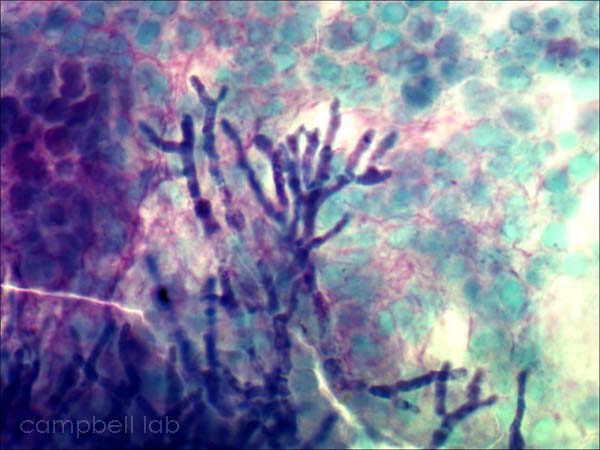|
Fungus isolation and identification is a specialized section in a microbiology laboratory with special certification requirements. Many laboratories can isolate fungus from ocular cultures but must refer the identification to a reference laboratory. Most fungi that infect the cornea can be isolated on routine culture media (i.e. blood agar, chocolate agar, and sabouraud's agar supplemented with gentamicin). In general, molds (hyphael elements extending over the agar medium that have a fuzzy appearance) and yeasts (pasty bacteria-like colonies) are isolated within 3 to 7 days after inoculation. The most common molds isolated from fungal keratitis are Aspergillus and Fusarium but other genera have been isolated. Candida albicans, C. parapsilosis, and other Candida species are the most common yeast pathogens of the cornea but other yeasts have been implicated. Corneal specimens for microscopic examination by giemsa or specialized mycology stains should be obtained and are highly recommended as a rapid detection test. Ophthalmologists should discuss with the laboratory the fungal possibilities and the range of fungal isolation and identification that is required. More invasive culturing may require a tissue specimen that may necessitate a corneal biopsy.
|
|

